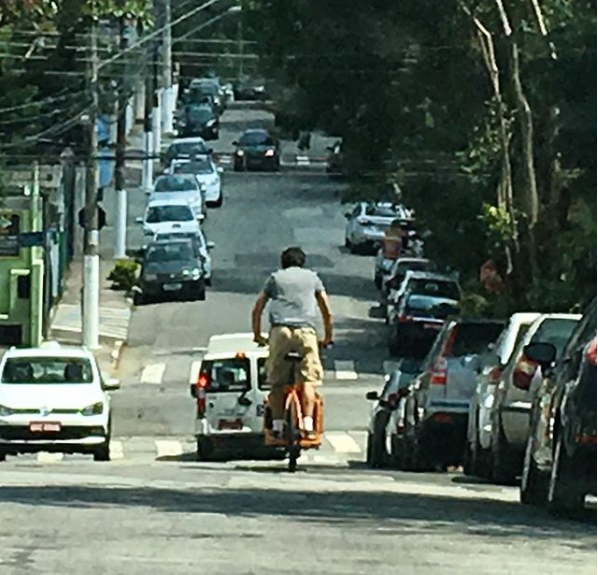
More and safe cyclists through bicycle education
Bicycle education is a main topic in the upcoming Velo-city 2018 conference program in Rio. Under the sub-theme Learn to live, two sessions will be devoted to discuss different aspects of education, i.e. education-children and education-traffic. Looking forward to take part in these stimulating debates, let’s briefly analyze what bicycle education implies.
“Children are like wet cement. Whatever falls on them makes an impression”. This quote from the famous psychologist Haim Ginott reminds us that encouraging children to adopt good behaviors will lead to the creation of better societies. Undoubtedly cycling is amongst those good behaviors. Cycling is a fun, healthy and time-saving activity, which can improve the quality of our lives especially in urban environments. Moreover, educating kids to be good cyclists will eventually make them good motorists: learning to share spaces with all other road users and do it according to safety rules is fundamental to become a more respectful motorist.

The bicycle is a mode of transport that has always been familiar to children and teenagers, but nowadays as a consequence of the urbanization process, cycling spaces have drastically reduced[1]. Many families thus prefer to drive their kids to school by considering it a safer option. This however does not match to reality. As demonstrated through a research study conducted by the Colorado University in Denver “the increasing number of bicycles on the streets reduce the percentage of accidents and it makes traffic safer”. Therefore, cities with a large number of bicycles are not only safer for cyclists, but also for motorists. It is not possible to think that education can solve all problems, adequate infrastructures and urban planning remain crucial aspects, however it is necessary to encourage a cultural paradigm shift towards sustainable mobility in general and cycling in particular. The shift needs to start at school, in class students can learn together through theoretical and practical activities. This can help to eradicate in many countries the idea that “cycling is a poor mode of transport [...], on the contrary its use must be socially supported”[2]. In this regard, a fundamental educational intervention has to be aimed at the younger-age.
Clearly an important role in educational programs must be given to improving cyclists’ traffic skills, since an increasing number of children are living in urban contexts. This is the case of some countries, as the Netherlands, where there are since ‘60s the ‘traffic gardens’[3]. In those spaces traffic situations are simulated and kids are taught how to pedal safely.
Along with children it would be also important to educate the grown-ups. In fact, a key aspect is improving the education of drivers on how to share the roads with all road users, specially cyclists and pedestrians. Actions such as passing a cyclist on the road, recognizing bicycle lanes, navigating intersections with pedestrians and cyclists, and exiting a vehicle without endangering pedestrians and cyclists should be a natural and normal stance for all motorists. In this respect, including safety cycling and pedestrian information in driver’s education courses, driver’s education manual and driver’s licence written exams should be a standard practice worldwide.

A further element that should not be underestimated is educating cyclists and pedestrians to share spaces, particularly in those ‘conflict’ areas such as shared off-road paths/trails. Based on the premise that pedestrians and cyclists need to be allies and not enemies, there is the need of having clear rules on how sharing the common spaces in order to preserve safety for all. In an ideal world pedestrians and cyclists would have dedicated cycle and pedestrians paths everywhere, but since reality is different, it is important to avoid bad behaviours. There are “antisocial cyclists as well as antisocial drivers and there are antisocial pedestrians. [...] What really matters is understanding: it's about sharing, and everyone needs to take a step back and be more mellow”[4]. Empirical studies are however encouraging in this sense, in fact they show that cyclists tend to adapt their behaviour and be flexible. In addition, Installing signage, speed-mitigation actions and monitoring can actually help a lot to ensure a harmonious co-existence between pedestrians and cyclists.
[1] See FIAB (Italian Federation of Friends of the Bicycle) http://www.fiab-onlus.it/downl2/sicur06.pdf
[2] In the European Union, for example, between 70 and 80% of the population lives in urban areas
[3] View the original article (in Portuguese) at http://vadebike.org/2012/07/holanda-educacao-transito-criancas-jardim-traffic-garden/
[4] See https://www.theguardian.com/commentisfree/2013/jan/04/can-cyclists-pedestrians-share-road
News category:
Network/Project Involved:
Contact the author
Recent news!
Upcoming events
Contact Us
Avenue des Arts, 7-8
Postal address: Rue de la Charité, 22
1210 Brussels, Belgium









